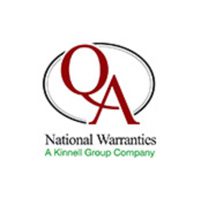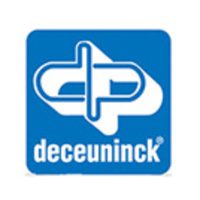Aluminium casement windows have a lot going for them. They are durable, stylish, eco-friendly and energy-efficient. Sitting within a frame and fully opening on hinges, they offer excellent ventilation and stunning views.
Popular for homes with a contemporary aesthetic and commercial projects, they are versatile enough to be used in some period properties.
But are they right for your home?
With 25+ years of experience providing and installing aluminium casement windows, we are perfectly placed to help you answer that question. In this blog, we will identify some of the biggest pros and cons of aluminium casement windows, giving you the information you need to decide.
Pros of Aluminium Casement Windows
There are many benefits to installing aluminium casement windows in your home, including:
- Durability: Strong even when slimline, long-lasting (up to 30 years with proper maintenance) and resistant to scratching, warping, rotting, rusting, and weather damage.
- Aesthetic Appeal: Sleek, slim frames with modern finishes; customisable colours, metallics and two-tone designs. A choice of hardware adds the finishing touch.
- Beautiful Views: Ultra-slender frames create uninterrupted views
- Natural Light: Slim frames and the casement style allow natural light to flow into your home
- Ventilation: Casement style can open fully for excellent ventilation
- Glazing Options: Strong, slim aluminium frames can hold a variety of glazing, from double and triple glazing to Planitherm Low-E glass.
- Energy Efficiency: All our aluminium windows are A-rated, enhanced by thermal breaks and advanced glazing options to reduce your heating bills and carbon footprint.
- Low Maintenance: Requires minimal upkeep compared to timber or other materials.
- Eco-Friendly: A natural material, 100% and infinitely recyclable and often made from sustainable sources.
- Security Features: High strength, meeting British Police Security Standards and carrying the PAS 24 seal of approval. Suitable for multi-point locking systems and toughened laminated glass.
- Versatility: Ideal for small or large openings, custom designs, and modern architectural styles. Some styles, such as our Heritage range, can blend with period properties. Design variants such as tilt and turn and various configurations are also available.
- Mid-Range Cost: Typically cheaper than timber, although more expensive than UPVC.
Cons of Aluminium Casement Windows
There are a few potential drawbacks to consider before committing to aluminium casement windows, such as:
- Cost: Aluminium windows require a higher initial investment than materials like UPVC.
- Thermal Performance: They may require additional thermal breaks to match the insulation and energy efficiency of other materials.
- Condensation Issues: Aluminium frames can lead to condensation if not properly insulated.
- Corrosion Risks: Can corrode in salty or coastal environments if not properly treated, so it is best to use marine-grade aluminium in these environments.
All aluminium windows at Manchester Window Factory are treated to withstand inclement weather and reduce the risk of condensation. They incorporate thermal breaks and provide excellent value for money when you factor in the money saved on keeping your home warm in the winter. We also offer a buy now, pay monthly finance option.
Comparing Aluminium with Other Materials
We have outlined the pros and cons of aluminium casement windows. But how do they stack up against other popular materials? Here’s a quick comparison table so you can see for yourself.
Material | Durability | Aesthetics | Energy Efficiency | Maintenance | Ideal Use Cases |
Aluminium | Very strong and highly durable. Almost immune to rusting, cracking and warping. | Elegant slimline frames provide excellent views and a modern look. Heritage styles can blend in older properties. | High if thermal breaks are present. Can be enhanced with Low-E glazing. | Low; Simple occasional cleaning is all that’s required. | Aluminium is ideal for commercial projects and modern homes. Since it retains its strength at any thickness, it is great for large windows. |
UPVC | It is strong and durable but can crack over time. Some colours may also fade. | Less premium appearance, although wood-grains and other finishes are available. | Excellent; Typically has lower U-Values than untreated aluminium. | Low; No painting or sealing required, just regular cleaning. | Affordable UPVC is the top choice for budget-conscious homeowners. |
Timber | Long-lasting when properly treated but can rot, warp and split. | Traditional, authentic aesthetic, perfect for period homes and adding character. | Good; Can be improved with Low-E glass. | High; requires regular painting and sealing. | Listed buildings, traditional or period homes or premium properties. |
Composite | Offers the durability of aluminium with the better insulation qualities of timber. | Versatile; Can blend seamlessly with contemporary and more traditional architecture and design. | Excellent; thanks to thermal breaks and energy-efficiency glazing. | Low to Moderate; composite with a timber core may need more maintenance than UPVC or aluminium but less than a timber frame. | High-end builds where visual appeal and functionality are equally important. |
Is Aluminium the Way to Go?
Whether casement aluminium windows are right for you will come down to a few key factors, including budget, personal preference and long-term value vs initial cost.
We’ve created the checklist below to help you better understand your priorities.
Factor | Aluminium | Alternative |
Budget | ✅ Durable and long-lasting, worth the investment. | ❌ Alternatives like uPVC are more budget-friendly upfront. |
Climate | ✅ Resists warping and corrosion, ideal for most conditions. | ❌ Untreated aluminium may corrode in coastal areas (use marine-grade). |
Design Preferences | ✅ Sleek, modern frames with customization options. | ❌ Timber may better suit traditional or heritage properties. |
Energy Efficiency | ✅ Advanced glazing and thermal breaks ensure good performance. | ❌ uPVC can sometimes offer better energy efficiency at lower cost. |
Maintenance | ✅ Low maintenance; occasional cleaning needed. | ❌ Timber requires regular painting and sealing. |
Security | ✅ Strong material, supports advanced locking systems. | ❌ uPVC may lack the same level of strength and security. |
Longevity | ✅ Lifespan of 20+ years with proper maintenance. | ❌ Alternatives like uPVC may degrade faster over time. |
Environmental Impact | ✅ Fully recyclable and often made from recycled materials. | ❌ Timber may be more sustainable if sourced ethically. |
Window Size/Shape | ✅ Suitable for large panes and custom shapes due to its strength. | ❌ Other materials may not handle large spans as effectively. |
Property Type | ✅ Perfect for modern and contemporary builds. | ❌ Heritage homes might benefit from timber or composite for aesthetics. |
Conclusion
We’ve outlined some key advantages and potential drawbacks of choosing aluminium casement windows, but the final decision is yours. These versatile and attractive windows will enhance most homes but may not be quite right for every property. If you are on a tight budget, UPVC may be a better option, while timber has a timeless appeal that may be more suitable for a period property, such as a listed building or a home in a conservation area. If you live by the sea, you may need marine-grade aluminium, which is not the standard material for window frames.
Whichever material you favour, all our windows come with a minimum 10-year insurance-backed guarantee, as standard. With our bespoke design service, we can help you create the windows you want and then provide friendly and efficient installation.
How to Get in Touch
If you want to find out more about creating customised windows, doors, and conservatories, please don’t hesitate to get in touch. You can call us on 0161 976 4739, use our contact form or chat with us via the chat button at the bottom right of this website. If you live locally, you can also visit our Altrincham showroom, and check our contacts page for up-to-date opening hours.
We look forward to hearing from you!
FAQS
You should expect to pay around £400 per window, not including installation. Prices vary depending on the size, design and your choice of glazing.
Aluminium is prized for its durability, elegant slimline frames and green credentials, but it can be expensive. UPVC is a more affordable option but not quite as durable, bulkier and less eco-friendly than aluminium.
Aluminium windows are low-maintance. You typically only have to clean them with a microfibre cloth, a gentle window cleaning solution or warm, soapy water.
Aluminium is resistant to weather and corrosion and does not warp or crack as other window frames can. The average lifespan of a well-fitted aluminium casement window is 20-30 years+ if properly maintained.
Yes, aluminium windows can resist most climates. However, you should use marine-grade aluminium to prevent corrosion from salty air.
Yes, you can customise most aspects of your aluminium windows at Manchester Window Factory. Choose from various colours and finishes, including powder-coated options and dual-colour frames. The size and slimness of the frame, the glazing, the hardware and the security features can all be customised for a bespoke look.
You can also paint existing aluminium windows with the proper metal paint.
One of the many benefits of aluminium frames is that they are compatible with most glazing options. Since the frame loses none of its strength, no matter how slender it is, you can opt for double or triple-glazing, low-E glass, laminated glass for improved energy efficiency and security or self-cleaning glass for heavy footfall areas.
The installation process is as follows:
- A consultation to get measurements and discuss the best options
- Drawing up a free, no-obligation quote
- Measuring the space and removing old windows
- Fitting the new aluminium frames and sealing them for airtightness
- Clean up and issue FENSA certificate
For the best results, trust our professional CERTASS-accredited, in-house fitters to complete your fuss-free installation.




